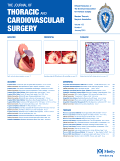Narsule CK, Burch MA, Ebright MI, Hess DT, Rivas R Jr, Daly BD, Fernando HC
J Thorac Cardiovasc Surg. 2012 Jan; 143(1):228-34.
OBJECTIVE:
Transoral incisionless fundoplication (TIF) is a promising approach for gastroesophageal reflux disease (GERD) that may decrease morbidity compared with conventional anti reflux procedures. We report our initial experience with this minimally invasive approach.
METHODS:
Over a 24-month period, 46 patients (mean age, 49 years; 50% female) underwent 48 TIF procedures. All procedures were performed under general anesthesia. Two surgeons participated in all cases; one served as the endoscopist, and the other performed the partial fundoplication. Heartburn severity was measured using the GERD health-related quality of life (GERD-HRQL) instrument (best score = 0, worst score = 45), which includes an additional question assessing overall satisfaction.
RESULTS:
Preoperatively, 33 (72%) of 46 patients had small (<3 cm) hiatal hernias, and none had undergone any previous antireflux procedures. Preoperative workup included manometry and barium esophagogram, with pH testing reserved for patients with atypical symptoms or typical symptoms and a lack of response to proton-pump inhibitors. The mean procedure time was 83 minutes (range, 36-180 minutes). The mean procedure time decreased after the first 5 cases from 122 to 78 minutes (P = .001). Mean length of stay was 1.3 days. One patient was readmitted with aspiration pneumonia. Three patients had minor complications (1 had minor bleeding from a suture site and 2 had urinary retention). There were no perioperative deaths. Mean follow-up was 140 days. The mean GERD-HRQL scores improved significantly (23 vs 7; P < .001). There were 22 patients with follow-up greater than 90 days (mean follow-up, 240 days). GERD-HRQL scores remained significantly improved for these patients (23 vs 8; P = .001). Four patients from the entire group (8.6%) had no improvement, in 3 instances due to breakdown of the wrap. Two patients were treated with repeat endoscopic fundoplication and 1 was treated with laparoscopic Nissen fundoplication, and all had a significant improvement in symptoms after reoperation.
CONCLUSIONS:
TIF is effective at short-term follow-up and safe for patients with GERD. However, long-term follow-up and randomized trials are required to assess the efficacy and durability of this approach compared with conventional surgical repair.
Link to abstract on PubMed: Narsule CK, et al; J Thorac Cardiovasc Surg. 2012 Jan; 143(1):228-34.
For PDF download of open access paper, click through the Full Text link in the upper right corner of the PubMed abstract page.


